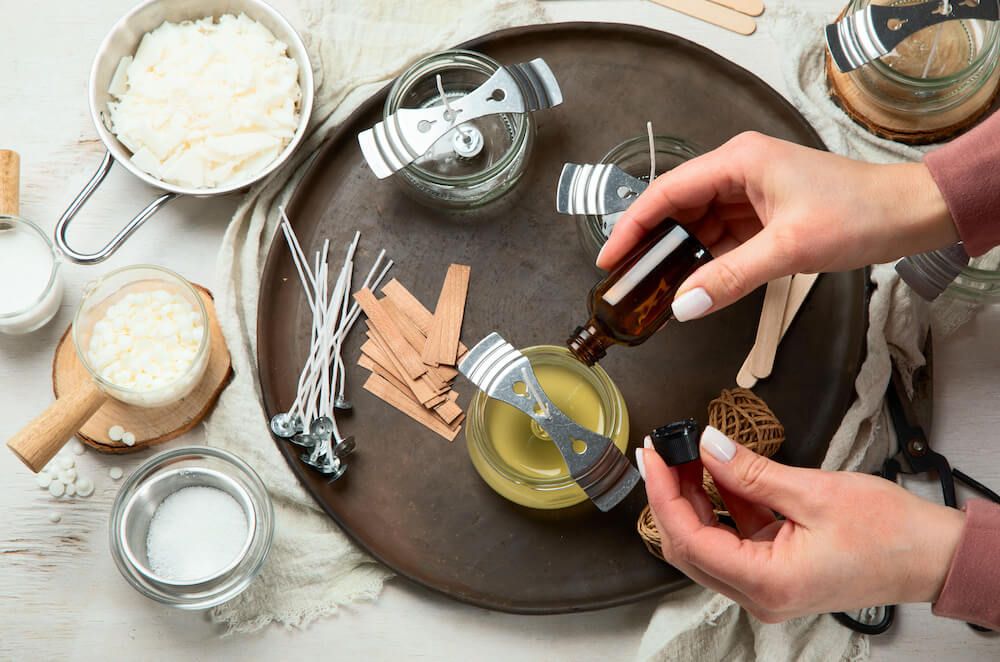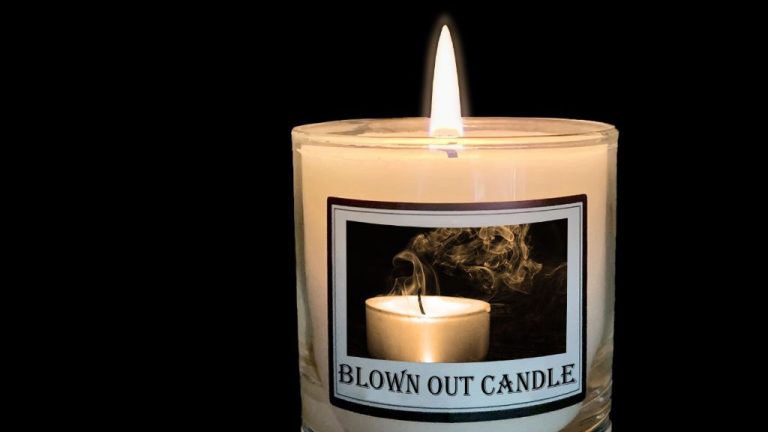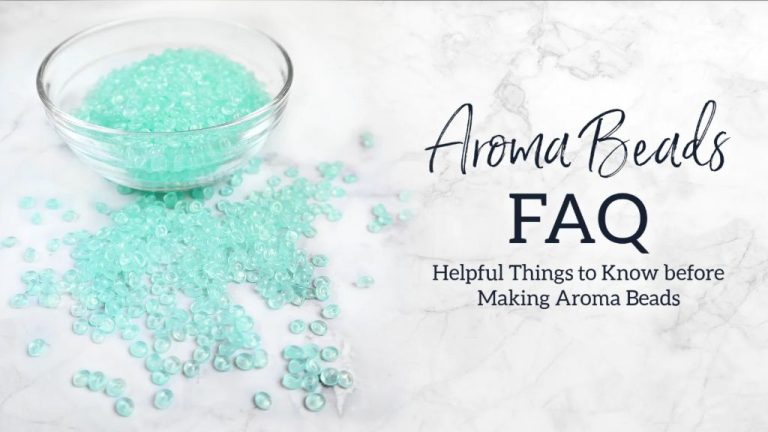What Is The Best Fragrance Oils To Make Candles?
Fragrance oils are essential ingredients in candle making. They provide the captivating scents that make candles so appealing. The fragrance a candle gives off as it burns is one of the main factors that draws people to candle use. Without fragrance, candles would be far less enjoyable.
Choosing the right fragrance oils is crucial for creating great smelling candles. The oils need to not only smell good on their own but also complement each other when blended. They should also burn cleanly without creating excessive soot or residue. Additionally, the fragrance should have enough strength to scent the wax without being overpowering.
Understanding how to select quality fragrance oils, blend them appropriately, and test them is key to producing candles with alluring long-lasting aromas. This guide will explore the best options for fragrance oils in candle making and provide tips for working with them successfully.
Types of Fragrance Oils
Fragrance oils for candles come in two main types: natural and synthetic. Natural fragrance oils are derived from plant-based ingredients like essential oils, extracts, and absolutes. Synthetic fragrance oils are created in a lab to mimic natural scents or produce novel fragrances not found in nature. Some key differences between natural and synthetic fragrance oils include:
Natural fragrance oils:
– Made from real plant ingredients like flowers, bark, roots, etc.
– Often more subtle and delicate in scent
– More expensive to produce
– Limited availability for some exotic scents
Synthetic fragrance oils:
– Formulated in a laboratory setting
– Allow for consistent, uniform scents
– Offer a wider range of fragrance options
– Typically more affordable than natural oils
Many candle makers use a blend of natural and synthetic fragrance oils to get the best of both worlds. Natural oils provide authenticity, while synthetic oils offer potency and access to unique scents. When selecting fragrance oils, it’s important to consider both the scent and performance in candles.
Top Notes
Top notes are the first scents released when a fragrance oil is burned. They are the light, fresh scents that make an initial impression when you first smell a fragrance. Top notes tend to be citrusy, fruity, green, and bright. Some examples of popular top note fragrance oils include lemon, orange, lime, grapefruit, bergamot, basil, green apple, and pear.
Top notes evaporate quickly when burned, so they are detected right away when a candle is lit. They provide the bright pop of scent you smell during the first 5-15 minutes of burning a candle. Top notes set the stage for the heart or middle notes to emerge.
Middle Notes
The middle notes, also called the heart notes, are the fragrances of a fragrance oil that emerge after the top notes fade, typically 5-10 minutes after the scent begins. The middle notes are often considered the “heart” or “soul” of the fragrance formula. They are key to the overall perception of the scent.
The middle notes anchor the overall fragrance and often represent its main theme or character. Common middle notes in fragrance oils for candles include floral scents like rose, jasmine, lily, lavender; fruits like peach, melon, strawberry; and spices like nutmeg and cinnamon (What do notes mean when talking about fragrance oils?, 2023). Middle notes typically last several hours before transitioning to the base notes.
Choosing fragrance oils with appealing and balanced middle notes is crucial for a pleasant candle fragrance. The middle notes will be the main scent people smell when the candle is burning, which makes them the core of the fragrance experience.
Base Notes
Base notes are the fragrances that appear once the top and middle notes have faded away. They usually come from thicker, denser sources and linger the longest on the skin. Base notes are often described as deep, rich, earthy, and provide a fragrance with a sense of foundation. Some examples of common base note ingredients include:
- Sandalwood
- Vanilla
- Amber
- Musk
- Patchouli
- Oakmoss
Base notes help ground the fragrance and provide depth and staying power. They are important for providing that lingering scent that sticks around even after the brighter top and middle notes have faded away. When blending fragrance oils for candles, base notes are key for creating a scent that will fill the room long after the candle is lit.
Blending Fragrance Oils
Blending multiple fragrance oils is a common practice when making candles to achieve a more complex and unique scent. There are several reasons why candle makers blend fragrances:
To create a signature scent – By mixing fragrance oils, candle makers can craft custom aromas that reflect their brand and style.
To enhance weaker scents – Some fragrances are naturally light or faint. Blending them with stronger oils gives a boost to their presence.
For scent progression – Top, middle, and base notes can be combined to provide an evolving scent experience from start to finish.
To smooth strong scents – Overpowering fragrances can be tempered and balanced out when blended with milder oils.
When blending fragrances, start with a small ratio like 80:20 or 70:30. Test how the oils interact and make adjustments as needed. Keep the total fragrance oil concentration between 5-10% of the wax. Thoroughly mix the oils before adding to wax to ensure an even distribution.[1] With careful testing and adjustment, candle makers can create unique fragrance blends that captivate their customers.

Testing Fragrance Oils
When creating scented candles, it is important to test each fragrance oil before fully committing to it in production. Here are some best practices for testing fragrance oils:
- Test on a small sample first – Only use a small amount of oil and wax to test the fragrance, that way you don’t waste materials if you end up not liking it.
- Test burn – Burn the test candle for at least 1 hour. This will give you an idea of how the scent smells when burning versus cold.
- Assess scent clarity – Make sure the fragrance has a strong scent throw but not overwhelming. The scent should fill the room without being overpowering.
- Evaluate after cooling – After blowing out the test candle, allow it to cool completely and smell it again. The scent may change and settle once cooling.
- Check acceleration – Monitor how quickly the wax sets up with the fragrance oil added. Some oils can accelerate cure times.
- Watch for discoloration – See if the fragrance oil discolors the wax or the candle burns irregularly.
- Allow ample testing time – Give yourself 1-2 weeks to properly test each fragrance oil. Don’t rush the testing process.
Taking the time to test each oil will ensure you choose the best fragrances for your candles. It’s worth the effort to guarantee your customers have an enjoyable experience with your products.
Best Fragrance Oils for Candles
When selecting the best fragrance oils for candles, there are a few standout options that are incredibly popular and highly rated:
Spiced Pear & Whiskey – This fragrance oil by CandleScience is frequently ranked as one of the best candle fragrances. It has bright, fruity top notes of pear, apple, and citrus blended with warming middle notes of cinnamon, clove, and vanilla. The base notes feature oak, whiskey, and amber for a sophisticated scent.
Pumpkin & Persimmon – A rich, sweet gourmand scent perfect for fall candles. This oil from The Flaming Candle has aromatic top notes of persimmon, lemon, and orange. The heart features pumpkin, cinnamon, nutmeg, and ginger. Deep base notes of vanilla, caramel, honey, and woods provide staying power. It’s spicy, fruity, and very strong.
Pumpkin Harvest – One of the most popular pumpkin fragrance oils according to reviews, this aroma by Candlewic has the nostalgic scent of fresh pumpkin pie. Top notes of nutmeg and cinnamon mix with middle notes of buttery pumpkin, brown sugar, and vanilla. The base showcases hints of musk and woods.
Storing Fragrance Oils
Proper storage and handling of fragrance oils is important to maintain their quality and scent integrity. Fragrance oils contain many volatile aromatic compounds that can evaporate or deteriorate when not stored correctly. According to The Flaming Candle, “For prolonged storage, we recommend keeping fragrance oils in amber glass containers to minimize the potential for damage to the fragrance oil composition.” https://www.theflamingcandle.com/how-should-i-store-fragrance-oil/ Amber glass helps protect the oils from light exposure which can cause the scent to fade.
Fragrance oils should be stored in a cool, dry place away from heat and light sources. Many fragrance oil makers recommend storage temperatures between 59°F and 77°F. Storing oils in the refrigerator or freezer is not recommended as this can cause ingredients to separate. According to Nikura, “As we mention above, the best place to keep your fragrance oils is in a cool, dry, dark place in your home. It can be a cupboard, shelf or drawer – anywhere that doesn’t get too hot or humid.” https://nikura.com/blogs/discover/how-to-store-fragrance-oils
When storing multiple fragrance oils, keep them in tightly sealed containers and separate from each other to prevent cross-contamination of scents. Only open fragrance oil bottles when in use and close them tightly afterward. With proper storage and handling, most fragrance oils can maintain their scent for 1-2 years.
Safety Considerations
When working with fragrance oils, it’s important to be aware of potential safety issues. Some key considerations include:
Allergies – Certain fragrance oils can trigger allergic reactions or sensitivities in some people. It’s a good idea to always list fragrance oils used in candles to allow consumers to check for ingredients they know they are allergic to.
Toxicity – Some fragrance oils contain chemicals like phthalates or synthetics that may be toxic. Essential oils are typically safer alternatives. However, some fragrance oils can also be safe for candles when reputable suppliers are used.
Testing – It’s wise to test fragrance oils by burning small candles first to check for any irritation or adverse effects before making large batches.
Usage – Follow usage recommendations from suppliers, as concentrated fragrance oils can be toxic if used incorrectly in too high amounts.
Storage – Store fragrance oils properly in cool, dark locations in tightly sealed containers. Keep away from children and pets.





